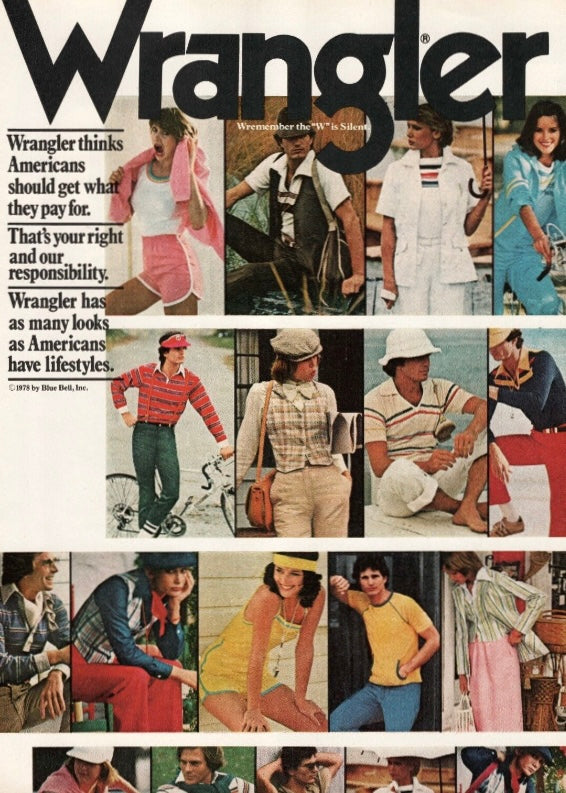History of Wrangler
The history of Wrangler, a well-known American brand of jeans and other clothing items, is deeply intertwined with the evolution of denim and the Western lifestyle. The roots of Wrangler can be traced back to the early 20th century, and its journey involves various transformations and innovations that have made it a prominent player in the denim industry.
The story of Wrangler begins with the Hudson Overall Company, founded in 1904 by C.C. Hudson in Greensboro, North Carolina. The company initially focused on producing overalls and workwear for farmers and ranchers. In the 1940s, the brand expanded its product line to include denim jeans, recognizing the growing demand for durable and comfortable work pants.
In 1947, Blue Bell, Inc., a clothing manufacturer, acquired the Hudson Overall Company. Under Blue Bell's ownership, the Wrangler brand was officially launched in 1947. The name "Wrangler" was chosen to resonate with the Western lifestyle, reflecting the rugged and adventurous spirit associated with the American cowboy.
Wrangler gained popularity in the 1950s and 1960s as the go-to brand for rodeo performers and Western enthusiasts. The brand's durable denim, reinforced with features like rivets and sturdy stitching, made Wrangler jeans well-suited for the demands of ranching and rodeo events.
During the 1970s-1980s, Wrangler continued to innovate in denim design. The brand introduced the "broken twill" denim weave in the 1970s, providing a more comfortable fit. The 1980s saw the launch of the "Pro Rodeo Jean," which became highly popular among professional rodeo cowboys.
In 1986, the VF Corporation acquired Blue Bell, Inc., and with it, the Wrangler brand. The VF Corporation played a crucial role in expanding Wrangler's global presence. The brand diversified its product range to include not only jeans but also shirts, jackets, and other apparel. Wrangler became synonymous with the Western lifestyle and casual, rugged fashion.
Wrangler gained further visibility through celebrity endorsements and appearances in popular culture. The brand's association with country music and its appearance in films and television contributed to its iconic status. Collaborations with artists and musicians kept the brand relevant and appealing to a diverse audience.
Today, Wrangler remains a symbol of American denim culture, catering to a broad demographic with a product range that includes classic Western wear as well as contemporary styles. The brand's rich history reflects its ability to adapt to changing times while maintaining a connection to its roots in the rugged, Western way of life.
How to Identify Vintage Wrangler
In community posts in the past, we have focused mainly on the tags of the garments to identify which era they belong in. While we will continue to do so with Wrangler, we also wanted to shed light on another way to discover the age of their garments- their logo & branding. We will start with the evolution of the Wrangler logo & then move on with their tag history.
*Sonny De Cru does not claim ownership of any images unless otherwise stated*
Identifying Wrangler: By the Logo
1940s to 1960s Wrangler Logo



Identifying Wrangler: By the Tags






0 comments